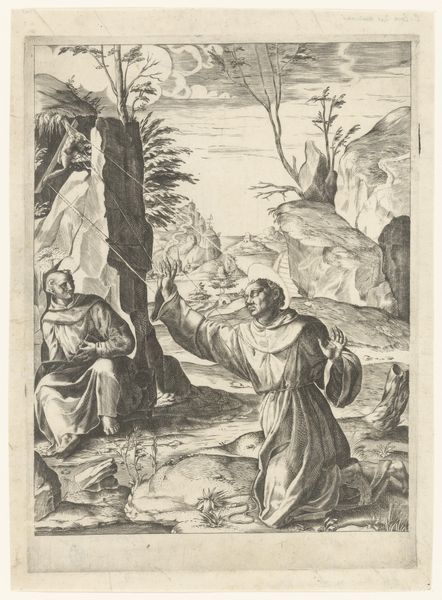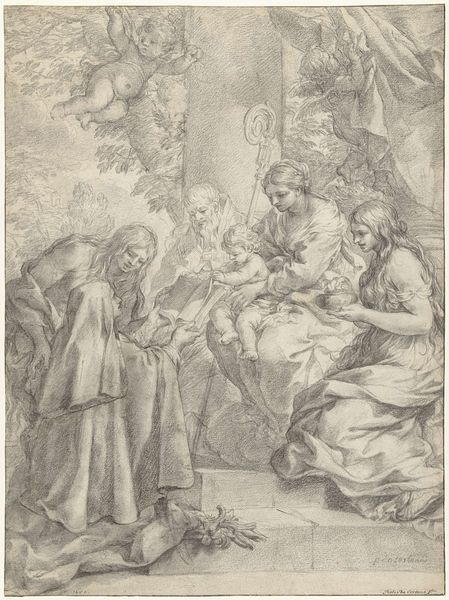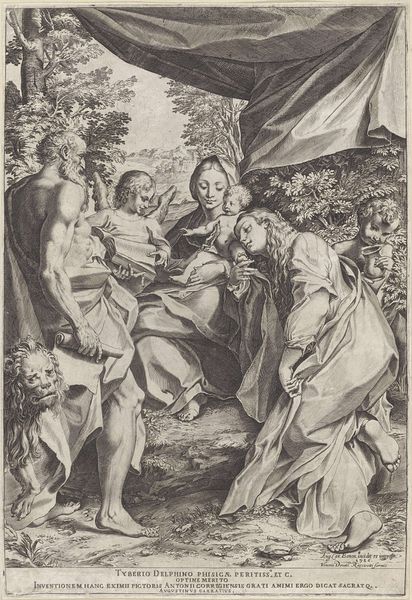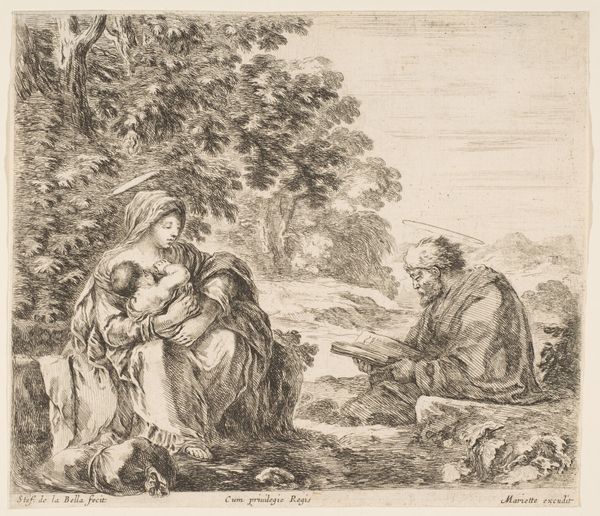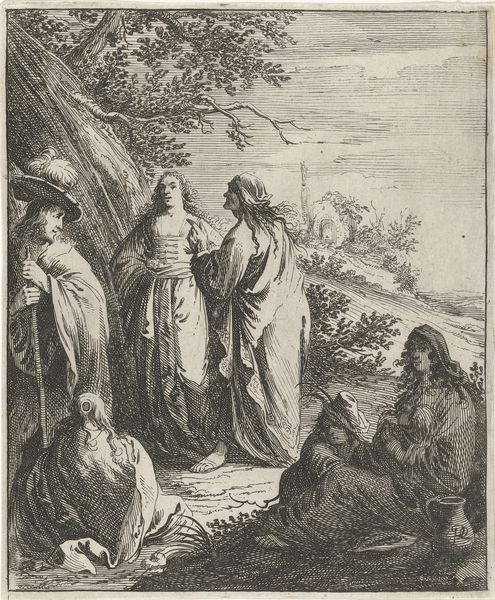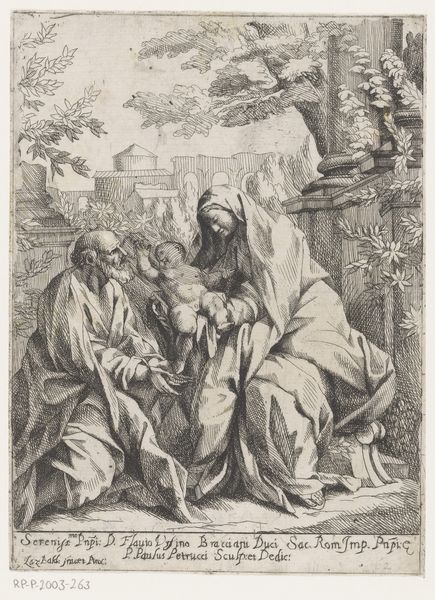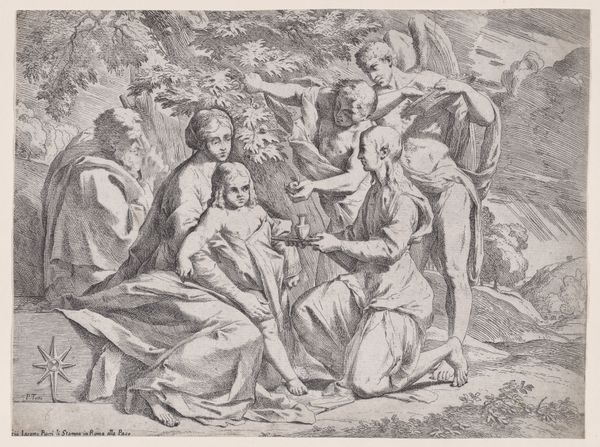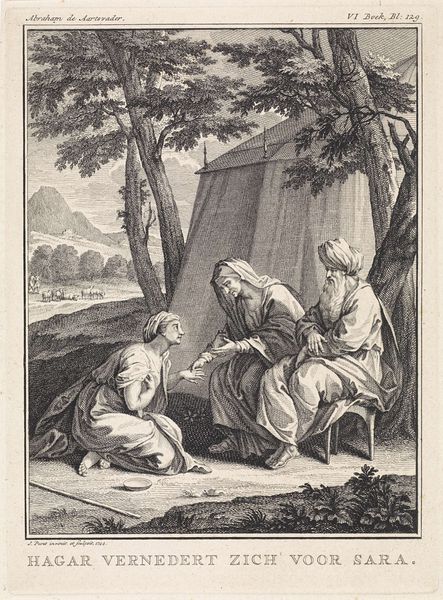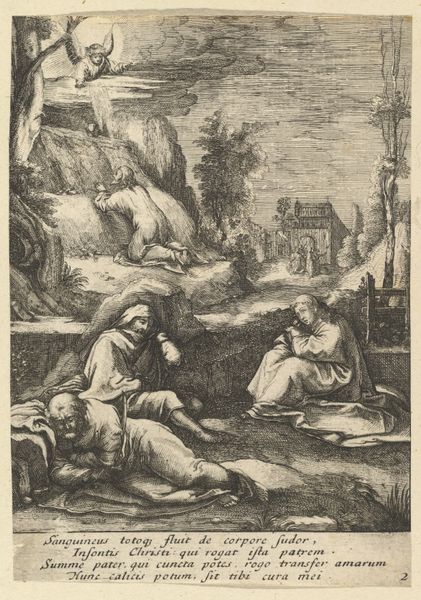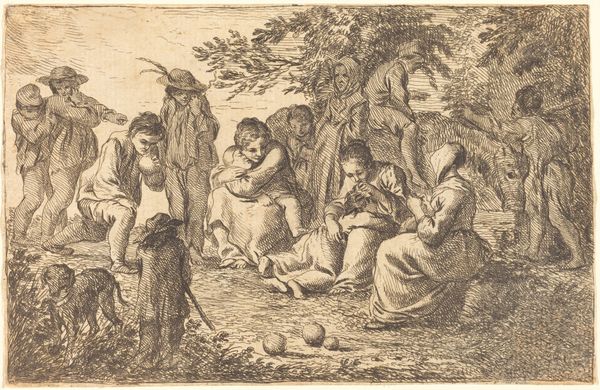
De heilige Benedictus zittend tussen de heiligen Bruno en Bernard 1668 - 1671
0:00
0:00
drawing, ink
#
portrait
#
drawing
#
ink drawing
#
baroque
#
figuration
#
ink
#
history-painting
Dimensions: height 155 mm, width 205 mm
Copyright: Rijks Museum: Open Domain
Curator: This ink drawing, crafted between 1668 and 1671 by Jan de Bisschop, is titled "De heilige Benedictus zittend tussen de heiligen Bruno en Bernard" and resides here at the Rijksmuseum. Editor: My immediate impression is one of solemn contemplation, even unease. The hatching gives it a weight, especially with the stark contrast and prominent figures in the foreground, yet also lends a sense of otherworldly calm, doesn't it? Curator: Indeed. Bishop, active in legal and artistic circles, often looked back to Italian Renaissance masters like Raphael. This history painting illustrates a very specific, idealized spirituality, but consider the broader social function of these sorts of images. Editor: And the means through which he creates that image! It's a drawing, yes, seemingly modest. But notice the confident linework and layered ink that achieves varied textures, from the robes' coarse cloth to the smoother faces and hands, and the sheer skill evident in manipulating this single material. Curator: Certainly. We see echoes of the era's power structures in these figures. Saint Benedict central, flanked by other key religious figures. They project stability and authority through a distinctly Catholic lens at a time of major social change. How does this all work as imagery for his contemporary audience? Editor: Looking closely, the skull and open book are interesting touches. Are these objects intended to guide devotion and influence moral choices within the contemporary labor of the time? Curator: Precisely! Consider that de Bisschop circulated within elite intellectual circles, which inflect how religion, political structures, and these revered individuals were visually encoded to a learned public. Editor: I'm still fascinated by de Bisschop’s rendering of the different fabrics, it reminds me of the complex economic networks related to textile trade and the materiality of devotion. It’s all so effectively realized just with ink! Curator: So we've touched on its artistic lineage and how its messaging served as part of the socio-religious landscape. Fascinating to unpack even in just a few moments, wouldn’t you say? Editor: Absolutely. The power of the object lies not only in what it depicts but how it's made and how these combined forces are placed and circulate through specific times and spaces.
Comments
No comments
Be the first to comment and join the conversation on the ultimate creative platform.

